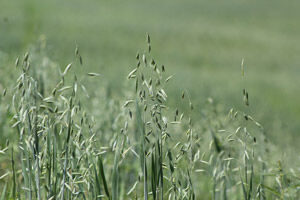The key to high-quality alfalfa is leaf retention.
Glenn Shewmaker, University of Idaho forage specialist, gives these takeaways on how producers can manage for a quality crop.
1. Establish a good stand
High-quality hay begins with planting.
“If you don’t have a good stand, it is difficult to have forage quality and retention,” he said.
Good stand management begins with controlling weeds and preparing a suitable seedbed.
2. Timing and equipment
Cutting at the right time is one practice producers can control, Shewmaker said.
“Maturity affects yield and quality,” Shewmaker said.
Leaf yield increases from vegetable bud to first flower.
“Somewhere around bud to first flower is the sweet spot” for cutting, he said.
Shewmaker recommends a disc mower over a sickle mower. However, disc mowers cost 25 to 50 percent more and require twice the power.
Disc mowers also “don’t do well in rocks, and they put dirt and foreign material like rodent carcasses in hay.”
Run the rake properly, he added.
“Keep those rake teeth high to avoid putting dirt in the windrow,” he said.
Meanwhile, if raking or tedding is done when the hay moisture content is at 50 percent, leaf losses can be kept at 5 percent.
Baling at the right time can also keep dry matter and leaf losses low.
3. Dry the hay as fast as possible
Less mature and higher yielding crops take more time to dry, he said.
Factors affecting drying rates include the weather, mix crop, management and soil moisture content.
“Solar radiation is the key,” Shewmaker said of the sun. “That is the factor that really dries the hay."
Try to rake when crop moisture levels are at 40 to 50 percent to prevent leaf loss, he said.
Also, he said, “Go out there and test the windrow moisture."
There are several apparatuses available to test moisture, he said. He suggested testing the bottom of the windrow.
Producers can also use the age-old method twisting a handful of alfalfa until it breaks to know if the hay is dry enough to bale.
4. Conditioning alfalfa
Proper conditioning can maximize leaf retention during harvest.
In one study, alfalfa hay moisture wasn’t affected by conditioner type in the first cutting. However, the "super conditioner" reduced hay moisture significantly over the standard conditioner in third cutting.
Shewmaker recommended producers inspect and adjust their conditioner for wear in the center. If the gap is beyond the recommended tolerance, consider replacing the rollers or trading the swather. Also, adjust the feed auger so a smooth flow of forage enters the conditioner.
Also, windrow size can affect dry down and can affect yield and quality, he said.
5. Cover the stack within 24 hours
It doesn’t matter the size of bale, Shewmaker said. “It seems like water is going to penetrate three layers.”
Producers can better manage leaf retention by covering their stack, he said.
Also, alfalfa quality is lost for every day it is stored in the field.
“You have to realize the longer hay is stored, the longer forage quality is going to decline,” he said.
Amy Bickel can be reached at 620-860-9433 or [email protected].




